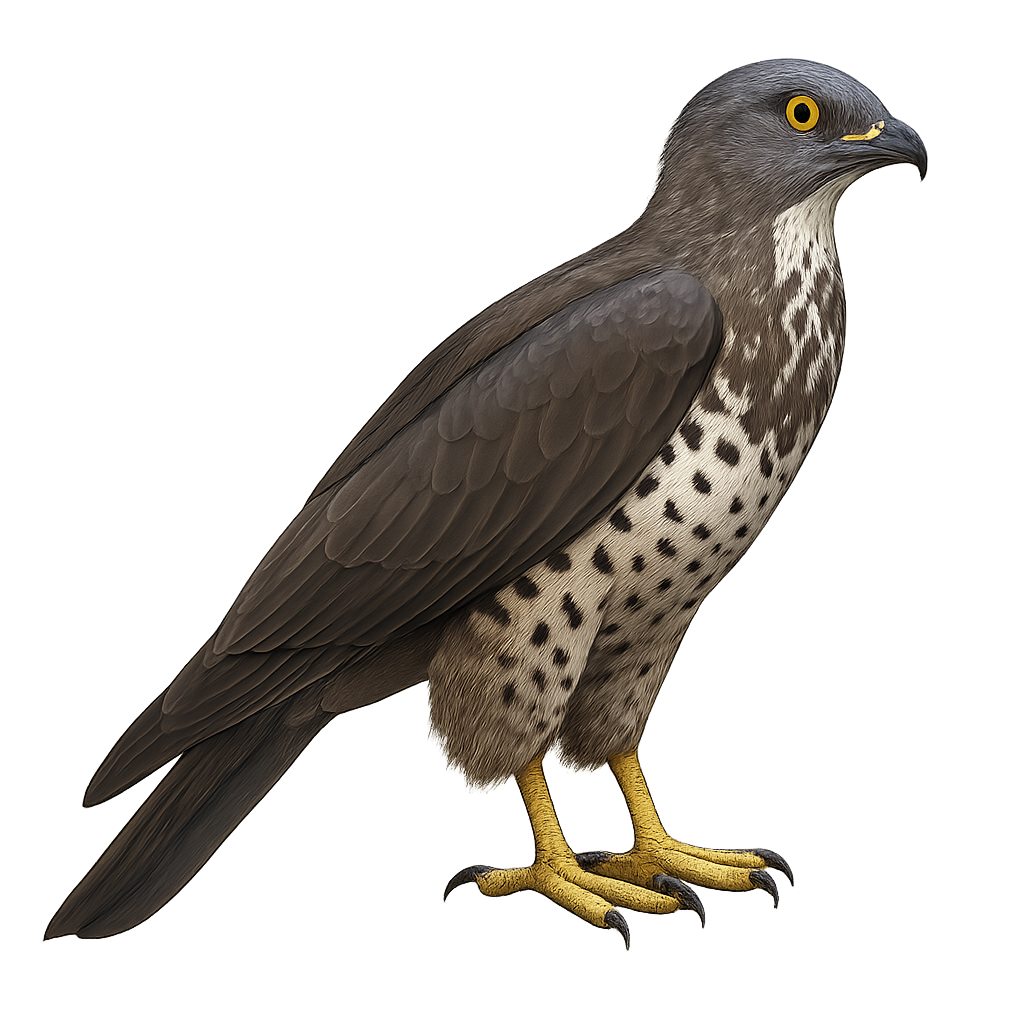Observe and photograph a species in its natural habitat
Learn where and when to observe a species in the wild, how to recognize it in the field, and what habitats it lives in. Get photography tips adapted to its behavior and capture stunning images without disturbing the animal. For full details, open the complete profile in the WildlifePhotographer app.
Honey Buzzard
Scientific name: Pernis apivorus

IUCN Status: Least Concern
Family: ACCIPITRIDAE
Group: Birds
Shyness: Suspicious
Safe distance: 50 m
Breeding season / Courtship: 01.05-31.05
Gestation: 33 à 34 jours
Births: 28.06-04.07
Habitat:
Deciduous forests with clearings
Description:
The Honey Buzzard is a medium-sized diurnal raptor, easily recognizable by its plumage marked with light and dark brown patterns and its slender build. It primarily inhabits open forests, hedgerows, and wooded areas in Europe and Asia, and feeds mainly on larvae of bees, wasps, and small insects, which it captures by flying above beehives or attacking the nests of social insects.
This raptor uses its powerful talons and curved beak to extract larvae from the nests. The Honey Buzzard is also known for its ability to undertake long migratory flights, leaving its breeding grounds in Europe to travel to warmer regions in North Africa for the winter. While the population remains stable in many areas, the Honey Buzzard may be threatened by habitat loss and the reduction in insect populations on which it relies.
Recommended lens:
>=300 mm
Photography tips:
Photograph from a distance using a telephoto lens to avoid disturbing the honey buzzard while it's flying or resting.
Prefer the early morning hours or late afternoon, when the light is soft and the honey buzzard is more active, often hunting for prey like insects or bees.
Capture flight moments: The honey buzzard is known for its acrobatic flight and ability to catch prey in mid-air, creating beautiful opportunities for dynamic photos.
Be patient: Wait for the bird to land or spot prey, while being discreet not to disturb its natural behavior.
The Honey Buzzard is a species of minor concern, but it is essential to respect its natural space, especially during the breeding season. Do not disturb its natural behaviors and follow local conservation guidelines to preserve this species.
Ready to take action?
Choose your platform and start your free trial today



